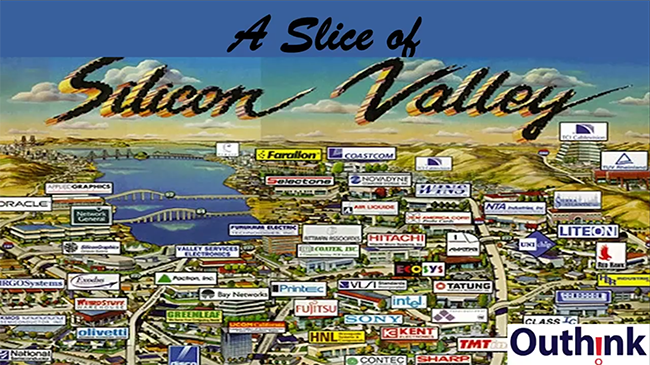
This story was produced with GLX Studio, a MediaMobz product. Visit the MediaMobz blog to learn how to produce and share your stories.
MediaMobz helps customers implement a content strategy that drives increased retention, reduces churn, and delivers meaningful customer journeys by offering a platform to build and sustain your content factory, one that makes content quality the focus of your processes, and drives engagement through content activation.
Transcript
Today I’m going to talk about a couple of different aspects of things that happened in Silicon Valley. One relates to vision, the other relates to timing in the market, and the other relates to execution.
The story starts 20 years ago when my firm Outhink was hired by Intel to help their CEO with their keynote at Oracle World in 2002. We were challenged with helping to define what the Internet might look like in 2022. Well, here we are. I’ll share some of the particulars. We got pretty close to what we are now calling Web3.
The reason we’re able to define it in a way that helps us understand that was by starting with the customer. We started our journey by coming up with an acronym called SPIN for Secure Personal Internets. Remember, this was before Web 2.0. This was when we had websites that people visited where you could search for a few things. Most of the glamour was around Yahoo and Netscape at that time. People didn’t really have laptops, they didn’t have cell phones, they had something called PDAs. They hadn’t really started to connect these things up.
We came up with SPIN to go out and interview people and understand as a customer of the Internet what would they like to see. We interviewed students. We interviewed some thought leaders like Peter Drucker. We interviewed a lot of people in technology to understand what are some of the constraints. The base of what we came up with was decentralized computing which was setting up a way for people to better connect together, to be able to have a service that they could use to communicate and share things and do it in a secure way where they own the data and the privacy was something they were insured. It was around real time communications. It was some early social networking. If you’re interested, there’s an Oracle World 2002 video that shows our demo.
Some of the takeaways from this to consider. First of all, the customer. How do you understand what the customer needs are and the fact that they’re changing and they may not always understand them. Understand how to innovate, how to give a better service, and better qualify customers for that limited amount of time they may stay with you. Whatever you’re doing, stay on that. Understanding how to innovate with customers is key.
I was in a company before Outhink called Gasonic. We helped build the factories and technology that powered the semiconductor industry over 50 years. We were a leader because we listened to our customers. We stuck by them. We wanted to walk in their shoes and understand the challenges they had and how to solve them. That’s true today more than ever with the bumpiness of our economy. So, number one, stay true to your customer. Number two, try to think about what’s going to better serve them and try to frame that in a way that might become a North Star. We’ll come back and talk more about Web3 and some of the things we saw early.
We were announced on stage at Oracle World as the first cloud platform to be used at Intel. We all know what the cloud is now. No one knew what it was then. So understand that your North Star might stretch too far for people to understand. So think about your customer, think about how they relate to things that you can extend and give them an understanding of your contribution. And then third, demonstrate that you can deliver those integrated services that help them get more done in a limited amount of time and bring innovation to that experience.
I wanted to share a personal slice of Silicon Valley today. I think the notion of Web3 and crypto has imploded, but what does Web3 mean and how do we relate to that today? As an example, we have virtual events, we have live events, we have campaigns, we have content marketing. All of those are one and done. They’re all ad hoc. How can we connect those so one can leverage the amount of money we’re putting into these and really convert a higher rate? Take advertising for example. We spend hundreds of billions of dollars on advertising every year and we get a single digit conversion rate. That means we’re throwing out hundreds of billions of dollars. What else would we do with that if we were able to define a path that took the customer, helped the customer, give them more time, more availability, and brought some innovation to that experience?
So hopefully this was something helpful for you and you’ll be able to apply it in your daily lives. Thank you.
